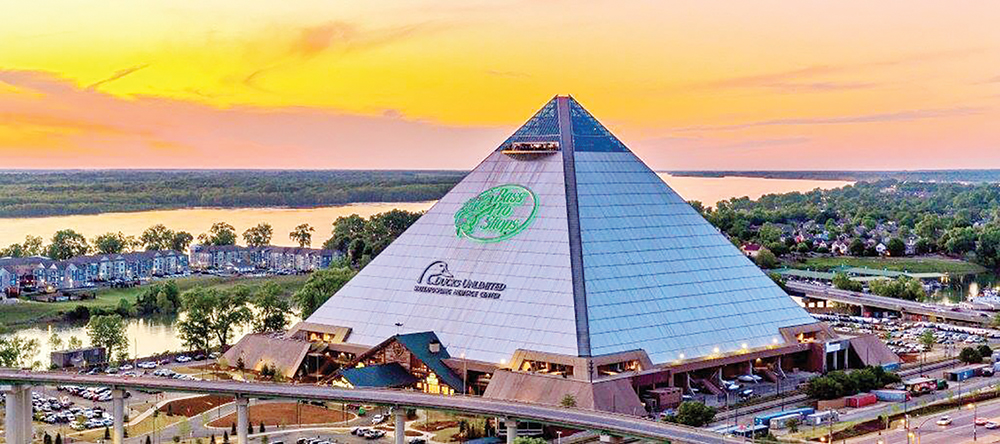For this story, we asked our readers “What questions do you have about Memphis?” We got back a fantastically varied group of queries, too many to answer in one issue. Then we scrambled to find the answers. What follows are the answers to some of your questions in what we’re calling the Flyer’s first Questions Issue. — Toby Sells
Was there really a crystal skull placed in the top of the Pyramid?
It’s Memphis’ weirdest urban legend: Soon after the Pyramid was opened in the early 1990s, someone found a box containing a crystal skull attached to the apex of the arena. The story periodically bounces around the internet, and was picked up by InfoWars’ Alex Jones as proof of the existence of a sinister Illuminati conspiracy.
According to Tom Jones (no relation to Alex), it is true — just not the Illuminati part. In 1992, Jones worked in the office of Shelby County Mayor Bill Morris. The public/private partnership between the city and county and developers Sidney Shlenker and John Tigrett had collapsed, leaving the governments holding the bag on a half-completed arena of questionable utility.
“We were put in charge of putting it back together,” says Jones. “We were renegotiating all the contracts, trying to get the building open in time for the first event. It was a pretty chaotic time.”
Soon after the arena’s opening, Jones recalls, “The company that managed the Pyramid called and said they had found a box at the top of the Pyramid, welded to the superstructure. ‘You want to come over and see us take it down?’”
Jones and four other people climbed the stairs to the glass top of the building where a maintenance man named Joe went up on a ladder and pried the box loose. “Then we took it back down to a conference room, inside the Pyramid, to open it.”
Paul Gurley from the city mayor’s office opened the box. “Inside the metal box was this blue velvet box, kind of a hinged box.”
When the velvet box was opened, a burst of dust flew out that smelled like incense. Inside, covered by a velvet cloth “… was this little skull. It was made out of crystal, and was about the size of your fist.”
The find baffled all present. “Why had someone put it there? What was the belief that led them to put that there? What did they think was going to happen as a result of it being there?”
Jones was put in charge of the skull. “I took it over to the Shelby County administration building, now, the Vasco A. Smith administration building, and locked it up in a safe in the finance department.”
Soon, Jones learned that Isaac Tigrett, founder of the Hard Rock Cafe and House of Blues, was responsible. Tigrett was a devotee of Indian guru Sathya Sai Baba, whom he credited with saving his life after a serious car accident. Baba had given Tigrett the skull along with specific instructions on how it should be aligned. “He had it affixed up there because of the cosmic impact it could have at the top of the Pyramid.”
When Tigrett heard that the skull had been removed, he reportedly said, “They have no idea what they have done.”
Tigrett immediately asked that the skull be returned, but Jones disagreed. “The contract we had with Shlenker and Tigrett said anything that was permanently affixed to the building became the property of city and county government. So, I took the attitude that it was now property of local government. I don’t know exactly what I thought we were going to do with it — probably send it to the Pink Palace.”
The Tigrett family appealed to then-Mayor Bill Morris, who eventually relented. “After a while, I got a call from the head of finance, saying, ‘Just wanted you to know, the mayor told us to turn the skull back over to the Tigretts.’ So, it went back to where it had come from.”
Although the unboxing was allegedly captured on video, and the skull photographed, no authenticated images of it are known to survive. Inquiries to Isaac Tigrett regarding the skull were not returned. But something else Tigrett said has stuck with Jones for 30 years. “He also said, ‘Well, they found one of them.’” — Chris McCoy
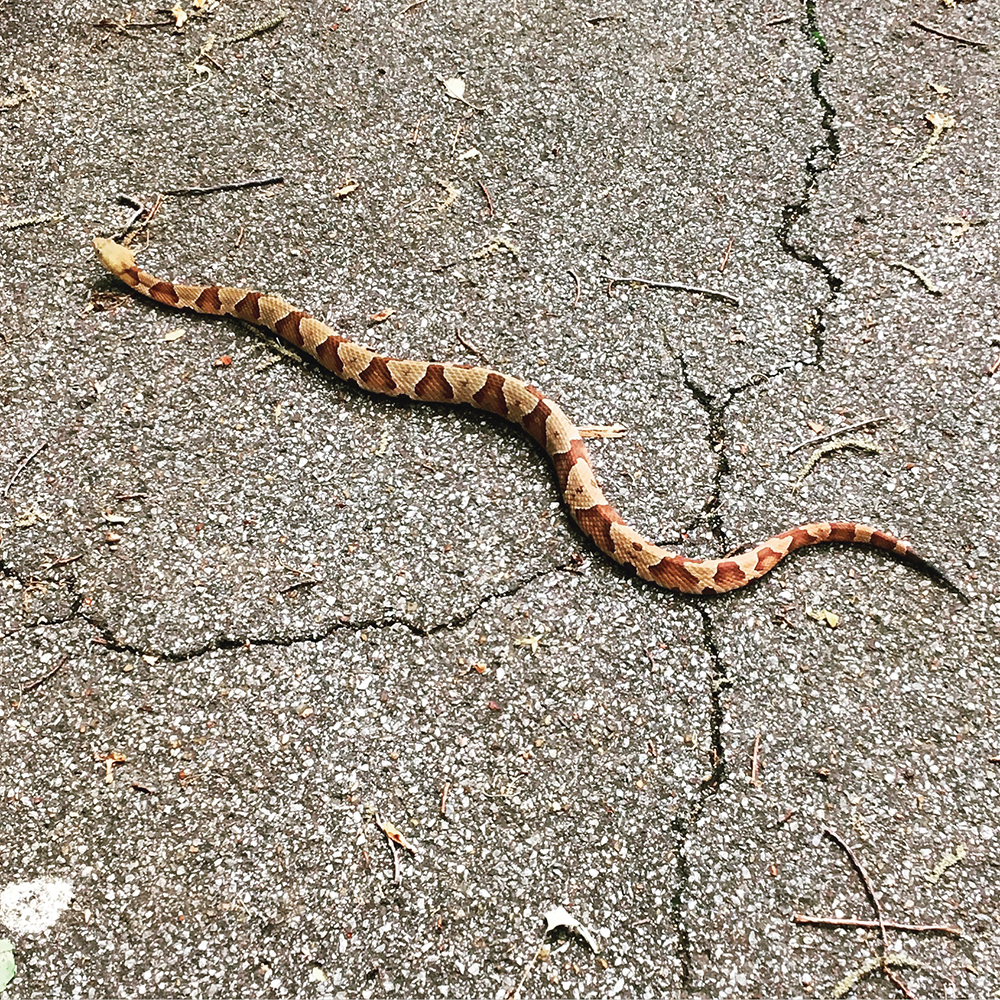
I keep hearing about copperheads in Overton Park. How worried should I be on my runs?
Overton Park is a century-old piece of Southern hardwood forest set in the middle of a modern city. It’s a rare treasure for an urban area, and the attendant wildlife is included. The park is home to hundreds of species of birds, mammals, amphibians, insects — and reptiles, including the eastern copperhead.
They are poisonous but reclusive, so how worried you should be depends a lot on how far off the beaten path you get. Copperheads tend to hide under logs and in leaf litter, and mostly avoid high human-traffic areas — except in the spring, when males go looking for love and are more often seen on public pathways. Snakes and other ground-dwelling animals also become more visible when the earth becomes soaked and dens get flooded after heavy rains.
“All snakes, venomous or not, are shy, secretive, and definitely afraid of humans,” says Dr. Steve Reichling, the Director of Conservation and Research at the Memphis Zoo. “It’s rarely a good day for a snake if they cross paths with one of us.”
In July 2016, a joint study conducted by the University of Memphis and the Memphis Zoo counted and tagged 73 copperheads in Overton Park. A recent study over three or four years found about 250 copperheads in the park, Reichling said. He said the snakes are “abundant” in the park and there are likely more in the Old Forest than other natural sites. If he had to guess, Reichling would put the number of copperheads in Overton Park at 350-400.
Sounds like a lot, but a Google search brought up no reports of a human being bitten in the park. “I know of only one time when someone was bitten,” Reichling said. “Think about how many people walk those forest trails every year and you get an idea of how peace-loving snakes are.”
The Overton Park Conservancy offers the following advice: “If you ever encounter a copperhead, just give the snake its space. The only time you’d be likely to step on one and trigger a defensive response is if you’re walking off-trail, which is just another great reason to keep to the paths.” — Bruce VanWyngarden
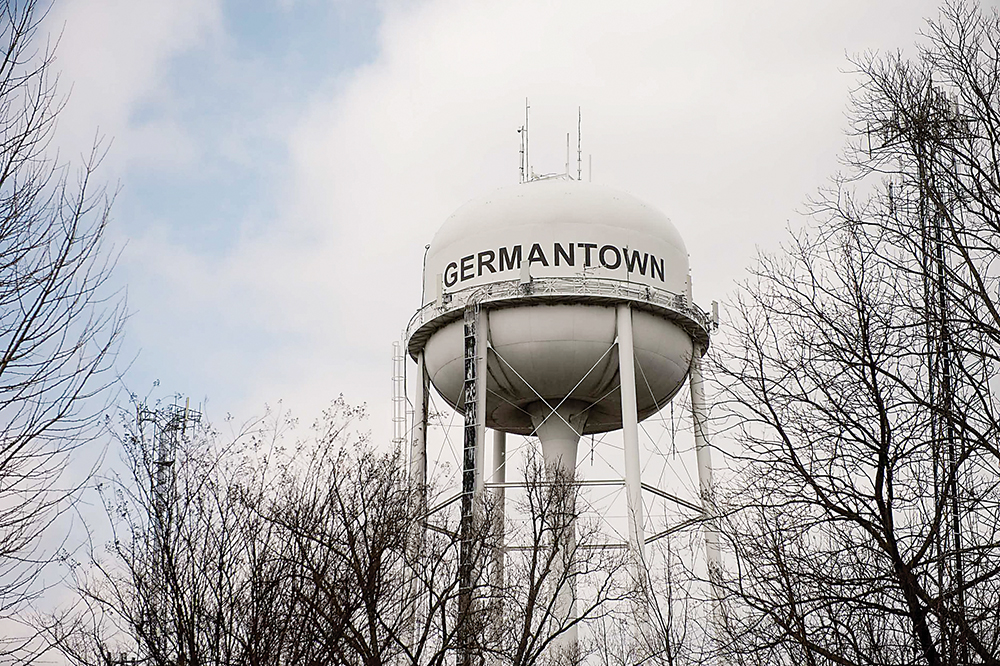
How did Germantown get its name?
Not, as people presumably think, from some influx during its settlement of immigrants from central Europe (though one such did occur), but from a 19th century American surveyor who laid out the town, a gent named N.T. German. Before Mr. German did his thing, the place had been called, briefly, Pea Ridge, and, before that, “Neshoba” (the Chickasaw name for “wolf.” You know, like the river that flows through the town?).
In 1825, and for the next three years or so, Neshoba was the name of a utopian community founded by one Frances “Fanny” Wright with the idea of training slaves in various trades as a way of preparing the abolition of their servitude. The community existed in the vicinity of the Wolf River and presumably at or near the locale that still bears the name of Neshoba Road.
The abolitionist project never got very far, and white participants in the project lorded it over the Blacks, none of whom, so far as is known, succeeded in earning their freedom and, as Wright proposed, emigrating back to Africa in the western spur of that continent that became Liberia. Neshoba had meanwhile become somewhat notorious for its flourishing free-love practices.
The name “Neshoba” was next used briefly during the course of World War I as a fallback name for what had meanwhile become Germantown. At a time of conflict with Germany, the semantics of the name seemed inappropriate to residents of the community, which reverted back to being called Germantown with the cessation of hostilities.
There was one more revival of the name “Neshoba,” when city/county school consolidation was first being discussed in the early ’90s, and the six outer-county suburban municipalities threatened secession from Shelby County and prepared, if need be and the state constitution permitted, to form a new county. To be named … yep, Neshoba. — Jackson Baker
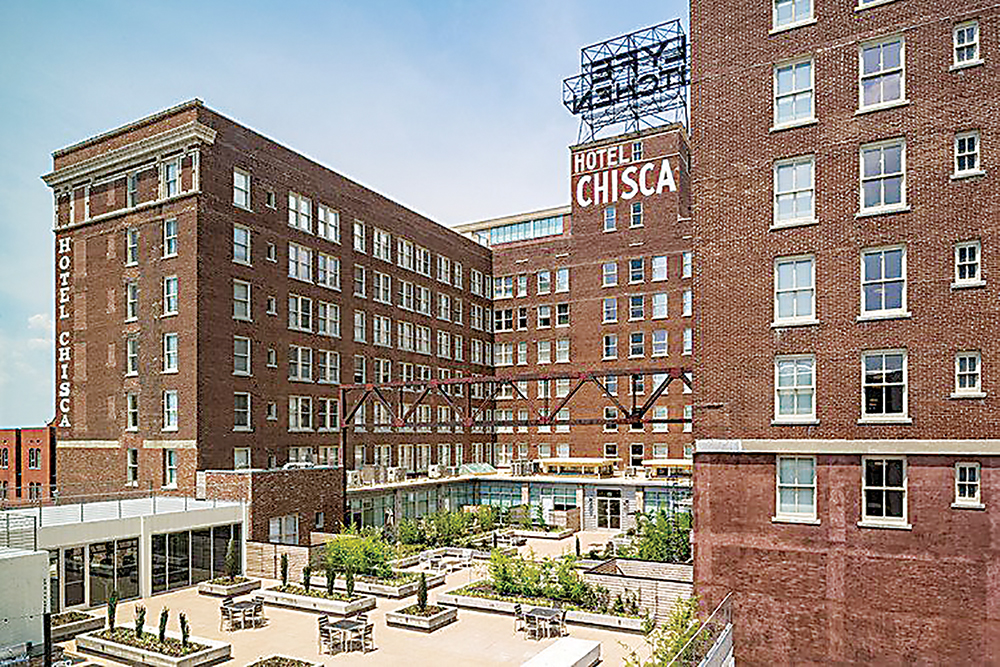
What’s up with all of these apartments and Memphis real estate in general?
When it comes to the business of apartments, Memphis is among the top competitive markets, ranking 25th nationally. A recent survey by RENTCafé shows why the local market is growing, even with rents on the rise.
There is a 95 percent occupancy rate in the area, with apartments staying vacant on the market for an average of 34 days. To compare, there are 11 prospective renters competing for an apartment, which is equal to the national average. And the national occupancy rate is 94 percent while units stay vacant for an average of 39 days.
We may align with national trends, but there are a multitude of market forces driving rentals, some shared all over and some singular to Memphis. Younger people are waiting longer to get married and/or have children, if at all. More Baby Boomers are now empty nesters, and senior housing is a growth market. Shifts in housing are happening constantly. And Millennials are entering the workforce and are moving to urban centers across the country, and Memphis’ evolving Downtown is doing much to lure younger workers.
Back in the 1980s, developer Henry Turley saw gold in the then-wasteland of Downtown. He built homes and apartments in Mud Island and along South Main. He was ahead of the demand, but the people did come. Since then, it’s been a matter of meeting the demand, not only in burgeoning Downtown but all over the city.
Recent years have seen a boom in housing construction, even in the pandemic. Not only new buildings but adaptive reuse of existing structures, as was done with the old Chisca Hotel into shiny new apartments. And the long-abandoned Tennessee Brewery building was saved from the wrecking ball to provide one of the cooler residential addresses in town. There is even what might be considered adaptive reuse of an entire neighborhood: South City, a $250 million project, is going up on the site of the former Foote Homes public housing complex and is bringing mixed-income apartments, rental homes, and green space.
The Downtown area is the most visible and has changed remarkably in recent years, but there is growth all over town and well into the suburbs. As long as the economy stays stable, which it’s largely managed to do in a pandemic, there should be a good market for apartments and housing around town.
But never say never. John Gnuschke, the former director of the Sparks Bureau of Business and Economic Research and the Center for Manpower Studies, has said that housing construction is sensitive to the fiscal winds. If there’s a depression or recession (remember 2008?), the availability of financing for developers might well disappear and put the quietus on housing expansion. — Jon Sparks
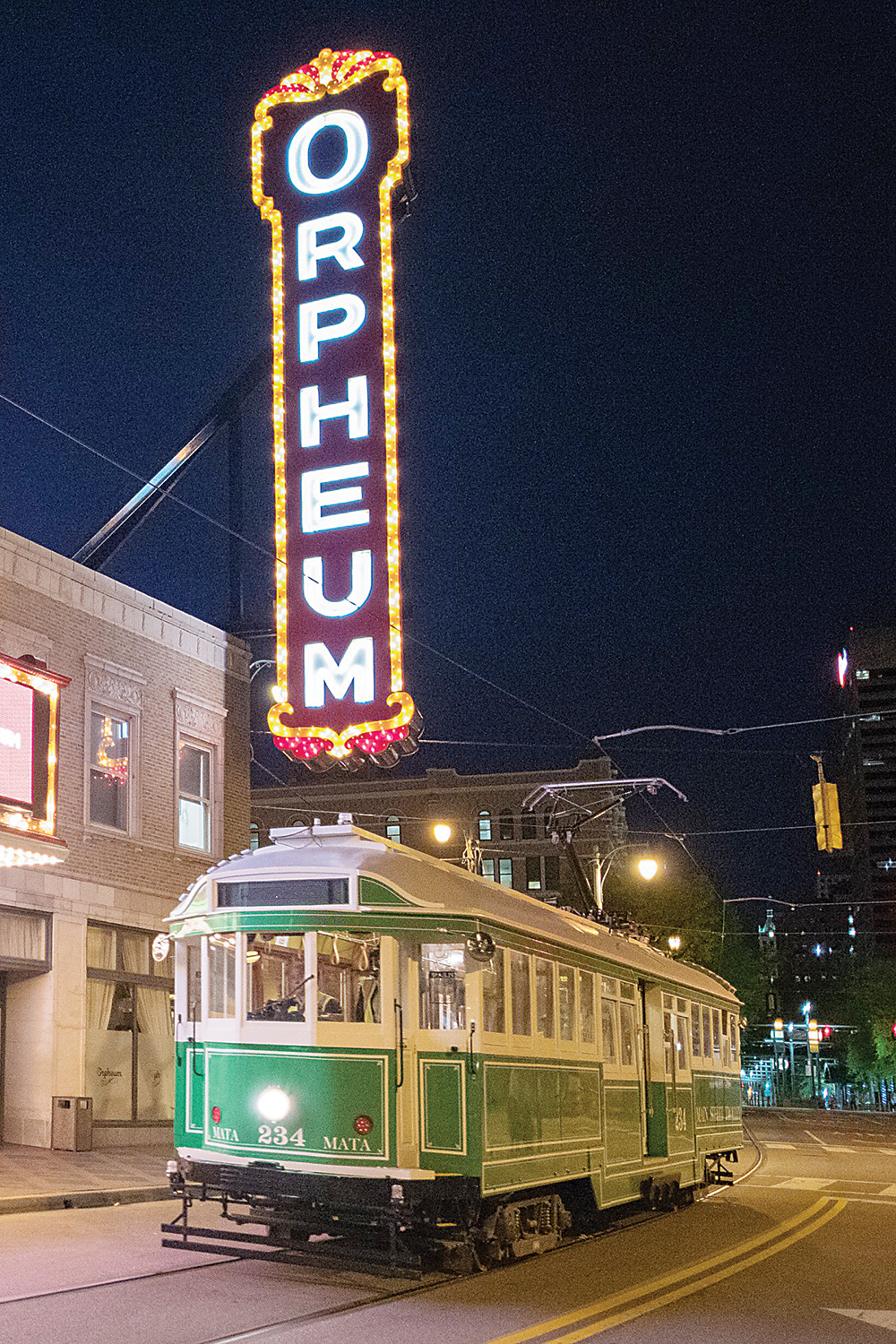
Will the trolleys ever return to the Riverfront Loop or Madison Avenue?
The most-recent era of the city’s trolley system began with fire. Two fires, to be exact — both on the Madison Line — caused a lengthy shutdown of the Memphis trolley system. Trolley 452 caught fire in November 2013 on the I-240 overpass just west of Bellevue. Trolley 553 caught fire in April 2014 on the Danny Thomas overpass bridge. Both were burned beyond repair.
The Madison line was closed that April. The Memphis Area Transit Authority (MATA), the agency that oversees the trolleys, closed the entire system in June 2014. MATA officials then began the slow, grueling process of bringing trolleys back to Memphis.
In 2015, then-MATA president Ron Garrison likened the process to “birthing a baby” and said “we are redoing our rail and rail safety program from the ground up.” That’s just what they did. Bringing trolleys back wasn’t as simple as figuring out why the other ones burned and fixing the problem, or even buying new vintage trolleys from other cities.
A report from the American Public Transportation Association (APTA) found MATA’s trolley infrastructure dated, found records of repairs lacking, and the oily, trolley-repair station called “the pit” to be dangerous. That report, too, found that in the three months before they caught fire, Trolley 553 had been discovered to have 43 defects and Number 452 had 29.
MATA leaders predicted and ultimately punted on numerous dates for the trolleys’ return to Main Street. The trolley tracks would remain largely empty for another four years. The trolleys returned with their familiar hum and rumble to the Main Street Line on April 30, 2018, three years ago.
Current MATA CEO Gary Rosenfeld says the agency’s board recently approved the purchase of three vintage trolley cars from the Charlotte Area Transit Authority. That city is upgrading its rail system, moving away from vintage cars like Memphis has to modern cars, which Memphis may have soon. (More on that in a minute.)
The vintage cars MATA bought from Charlotte will be put into service most likely on the Riverfront Loop, Rosenfeld said. He said cars may return to that line (a tourist favorite) in the next 18 months.
“When we bring the Riverfront Line back in service, I would be willing to guess that we will see a little bit more of an increase in tourism opportunities there and, then, in transportation,” Rosenfeld says.
The Riverfront Loop intersects the Main Street Line, and will increase the frequency of service on Main, too. This will have a positive effect on those using the trolleys for transportation. It’s this dual purpose, tourism and transportation, says Rosenfeld, that will likely keep vintage cars on the Riverfront Loop for a while.
But expect to see something totally different on the Madison Line soon. Rosenfeld said MATA now has a modern railcar like the ones in use in Atlanta and Charlotte. Those are tall and boxy with huge windows and are enclosed for modern amenities like air conditioning.
Such a car may be seen doing runs down the Madison Line sometime soon. But Rosenfeld was quick to say that MATA is not running a “pilot program” and such a car won’t be available for the public until “the line is perfect.” Runs of the modern car will help MATA “create a list of stuff that needs to be done in order for us to safely operate it.”
“It makes sense for us — rather than stick to heritage trolleys on that line — to recognize the development that’s going on there and be able to handle the density and increase of demand for streetcars along that corridor,” Rosenfeld said. — Toby Sells
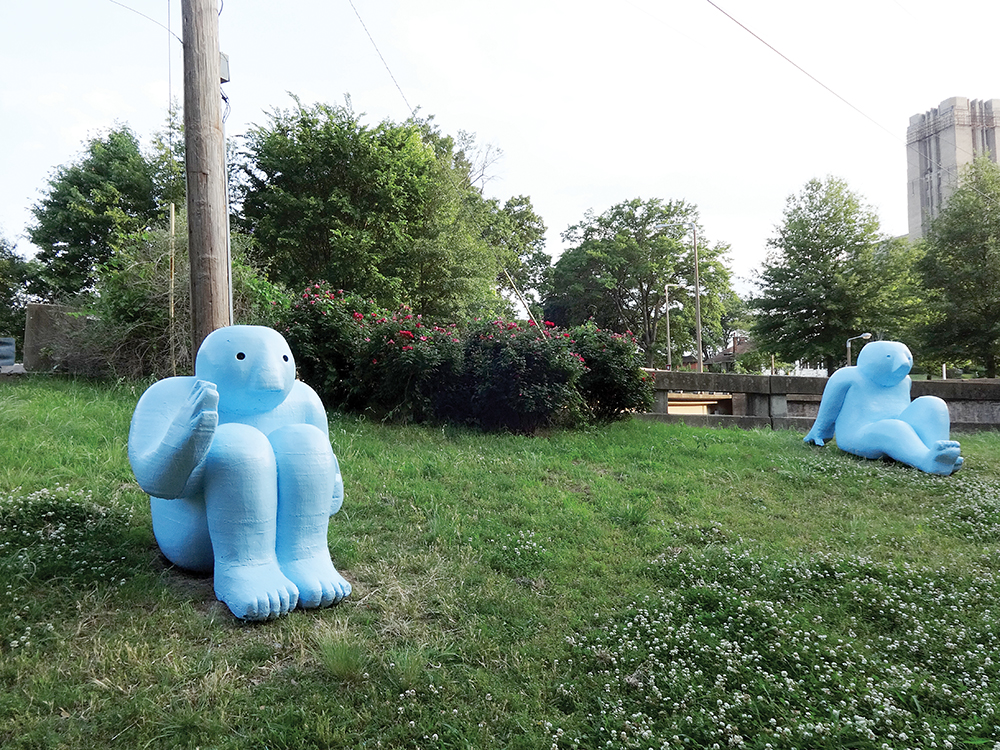
What’s the deal with the Blue Kids statues on the V&E Greenline?
Have you seen the big, blue vaguely person-shaped statues near Crosstown Concourse? They recline on a grassy hill at the western end of the V&E Greenline, a walking trail in the Vollintine-Evergreen neighborhood, which itself grew out of community involvement and the defunct L&N Railroad. But I didn’t really know anything about them — not even their official name — until I called Joshua First, secretary for the V&E Greenline Committee, for answers.
“I call ’em the ‘Blue Kids.’ Other people call them the ‘Big Kids,’” First says. The statues don’t have an official name at all; in the minutes of the meeting in which the committee discussed the proposed statues, as First puts it, “they were simply called ‘the sculptures at the west end of the trail.’”
The idea for the art installation came from Memphis-based artist Ben Butler, who was then teaching an art class at Rhodes College. He presented a series of potential public art pieces, the Greenline Committee selected the Blue Kids, and Butler and his students designed, built, and installed the statues as a class project. A happy coincidence — last week marks the 10th anniversary of the statues’ installation. What’s more, this year the trail celebrates its 25th anniversary.
“It quickly became an embodiment of the trail,” First says of the installation, noting that the student-built statues are an example of the independently operated trail’s DIY ethos. And, First says, the V&E Greenline is dotted with other public art projects, like Jeannie Tomlinson Saltmarsh’s metal trout weathervanes, or a new spherical structure installed last week. “It’s going to be a memorial to one of the founding members of the trail, Jan Kirby,” First says.
“We’re building our public art profile on the trail,” First says, “but the Blue Kids are where it all started.” — Jesse Davis
